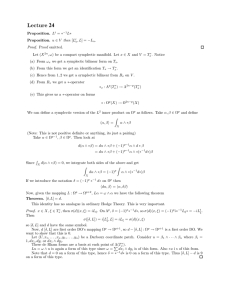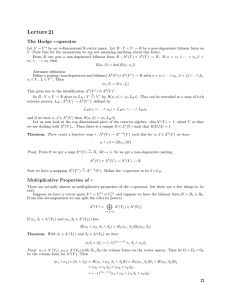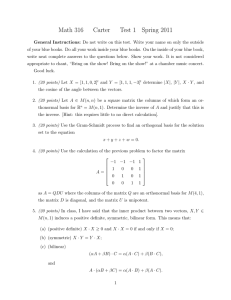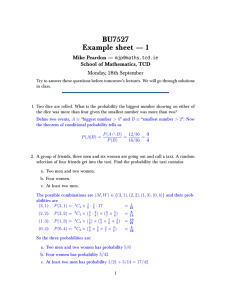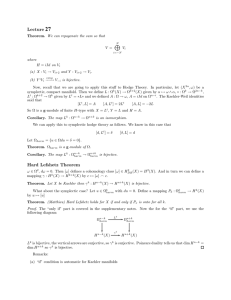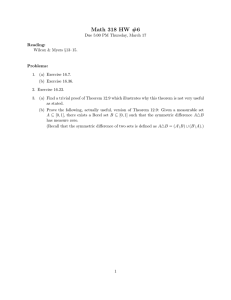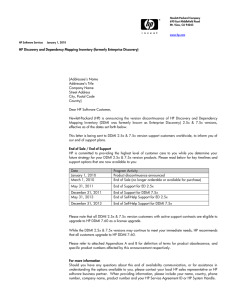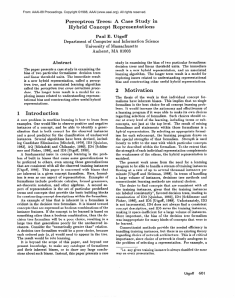Lecture 22
advertisement
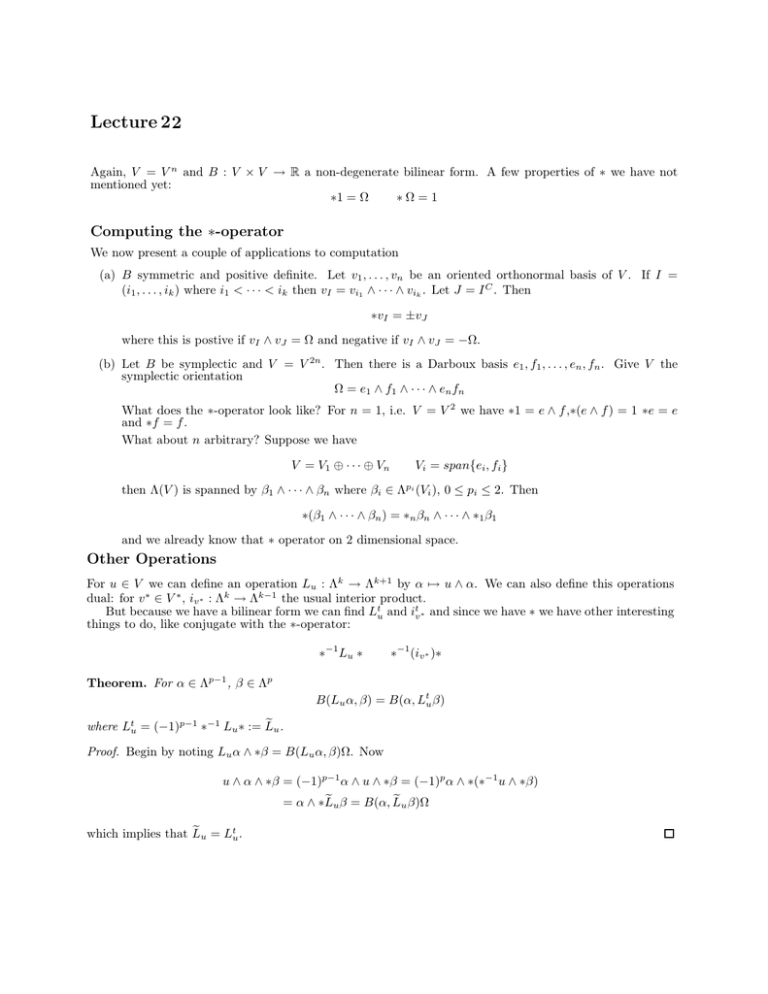
Lecture 22
Again, V = V n and B : V × V → R a non-degenerate bilinear form. A few properties of ∗ we have not
mentioned yet:
/ / ∗1 = Ω
∗Ω=1
Computing the ∗-operator
We now present a couple of applications to computation
(a) B symmetric and positive definite. Let v1 , . . . , vn be an oriented orthonormal basis of V . If I =
(i1 , . . . , ik ) where i1 < · · · < ik then vI = vi1 ∧ · · · ∧ vik . Let J = I C . Then
∗vI = ±vJ
where this is postive if vI ∧ vJ = Ω and negative if vI ∧ vJ = −Ω.
(b) Let B be symplectic and V = V 2n . Then there is a Darboux basis e1 , f1 , . . . , en , fn . Give V the
symplectic orientation
Ω = e1 ∧ f1 ∧ · · · ∧ en fn
What does the ∗-operator look like? For n = 1, i.e. V = V 2 we have ∗1 = e ∧ f ,∗(e ∧ f ) = 1 ∗e = e
and ∗f = f .
What about n arbitrary? Suppose we have
V = V1 ⊕ · · · ⊕ V
n
Vi = span{ei , fi }
then Λ(V ) is spanned by β1 ∧ · · · ∧ βn where βi ∈ Λpi (Vi ), 0 ≤ pi ≤ 2. Then
∗(β1 ∧ · · · ∧ βn ) = ∗n βn ∧ · · · ∧ ∗1 β1
and we already know that ∗ operator on 2 dimensional space.
Other Operations
For u ∈ V we can define an operation Lu : Λk → Λk+1 by α 7→ u ∧ α. We can also define this operations
dual: for v ∗ ∈ V ∗ , iv∗ : Λk → Λk−1 the usual interior product.
But because we have a bilinear form we can find Ltu and itv∗ and since we have ∗ we have other interesting
things to do, like conjugate with the ∗-operator:
∗−1 Lu ∗
Theorem. For α ∈ Λp−1 , β ∈ Λp
∗−1 (iv∗ )∗
B(Lu α, β) = B(α, Ltu β)
�u.
where Ltu = (−1)p−1 ∗−1 Lu ∗ := L
Proof. Begin by noting Lu α ∧ ∗β = B(Lu α, β)Ω. Now
u ∧ α ∧ ∗β = (−1)p−1 α ∧ u ∧ ∗β = (−1)p α ∧ ∗(∗−1 u ∧ ∗β)
� u β = B(α, L
� u β)Ω
= α ∧ ∗L
� u = Ltu .
which implies that L
What is this transpose really doing? We know we have a bilinear form B that gives rise to an map
Lu : V → V ∗ . Since B is not symmetric, define B ♯ (u, v) = B(v, u), and we get a new map LB ♯ : V → V ∗ .
Then:
Theorem. If v ∗ = LB ♯ u, then Ltu = iv∗ .
Proof. Let u1 , . . . , un be a basis of V and let v1 , . . . , vn be a complementary basis of V determined by
B(ui , vj ) = δij
and let v1∗ , . . . , vn∗ be a dual basis of V ∗ . Check that v1∗ = LB ♯ u1 . Let I = (i1 , . . . , ik−1 ) and J = (j1 , . . . , jk )
be multi-indices. We claim that
B(Lu1 uI , vJ ) = B(uI , iv1∗ vJ )
and that if j1 , . . . , jk = 1 and i1 , . . . , ik−1 = 1 then both sides are 1. Otherwise they are 0.
Theorem. On Λp+1 , (iv∗ )t = (−1)p ∗−1 (iv∗ )∗ and v ∗ = LB u.
